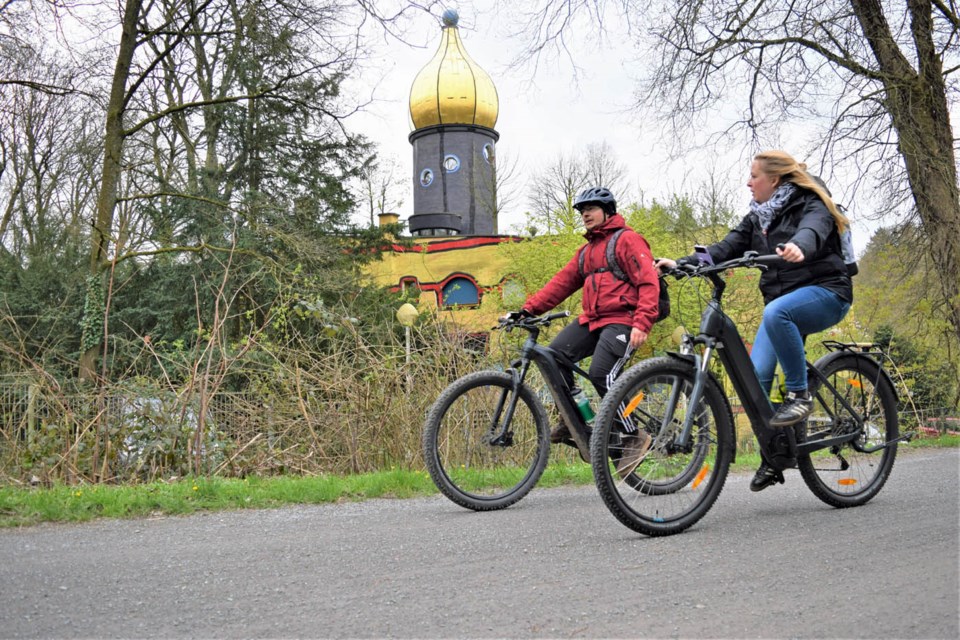We step onto the cliff top outcropping of rock and let the blue sky and lake vista envelope us.
"This viewpoint doesn’t even have a name," says guide Diana Blinkert of Visit Essen.
"I just call it The Rock. We’re so lucky to have found it off this little side path off the BaldeneySteig."
This type of epiphany comes early – and often – on the BaldeneySteig.
This 27-kilometre hiking trail is in Essen, a city of 520,000 in northwestern Germany, and rings Baldeney Lake to serve up verdant forest, gulping views of blue water, castle ruins and beer-garden stops.
It’s beautiful – exactly what you’d expect on a popular hiking trail.
However, the experience is amped up via its contrast to Essen’s past as a dirty, coal-and-steel powerhouse.
As soon as 30 years ago, you couldn’t hang your laundry out here because it would immediately get filthy with coal dust.
The sky was grey, even on a sunny day, the water grey, too.
Certainly, no one was hiking in this industrial landscape.
Over the past three decades, Essen has shed its industrial shadow to emerge an eco-destination for hiking, cycling, watersports, culinary and culture.
BaldeneySteig is one of 34 urban hiking trails in close proximity to the city.
And in true German style, restaurants with beer gardens pop up at regular intervals on these trails.
One of them, Jagdhaus Schellenberg, has a panoramic lake view and a totem pole in the garden by an Indigenous artist from Victoria.
Another, Sudtiroler Stuben, is lakeside, where Diana and I reward ourselves after a six kilometre hike with Bavarian beer and Riesling from the Mosel.
Zollverein in Essen was once the largest coal mine in the world – a hulking, massive, pollution-spewing operation.
The industrial complex still stands with all its towers, pipes and concrete buildings.
It’s been repurposed and is now a UNESCO World Heritage Site museum, conference centre, exhibition hall and special-events space.
Essen Mayor Thomas Kufen calls it the city’s Eiffel Tower in reference to its symbolism and tourism prowess.
The Germany Travel Mart convention I’m in Essen to attend holds its welcoming ceremony and banquet at Zollverein’s Grand Hall, complete with performances by acrobats, the ballet and a pop band.
It’s also where I first hear of how spectacularly Essen has de-industrialized, de-carbonized and revitalized to become a service, high-tech and tourism economy.
The transformation earned it the ‘2010 European Capital of Culture’ and ‘2017 European Green Capital’ titles from the European Union.
The accolades inspire me to hike with Diana and cycle and jog parts of the 300-kilometre Gruga-Trasse, the network of multi-use paths repurposed from abandoned railway tracks once used to transport coal and steel.
Essen is popular with European tourists and has now also set its sights on overseas travellers seeking post-industrialization recreation, fresh air and uniquely German culture, food, drink and hospitality.
These overseas travellers, including Canadians, will likely enjoy Essen as part of a broader German itinerary that includes the international gateway metropolis of Frankfurt (Essen is a direct, one-and-a-half hour train ride from Frankfurt) and the nearby cities of Dusseldorf and Cologne, which are half-an-hour and one-hour by train, respectively, from Essen.
Germany is poised to be a hot, post-pandemic destination for Canadians this summer.



